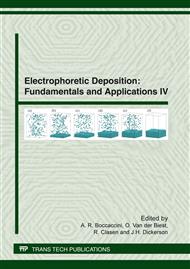p.3
p.9
p.15
p.21
p.27
p.35
p.41
p.47
Hybrid Electrophoretic Deposition with Anodization Process for Superhydrophilic Surfaces to Enhance Critical Heat Flux
Abstract:
Superhydrophilic surfaces with hydrophobic layers were successfully produced in order to enhance critical heat flux (CHF) and reduce boiling inception temperatures (BIT). The novel surfaces were fabricated by a hybrid electrophoretic deposition (EPD) method coupled with a break down anodization (BDA) process. With the BDA process, microporous superhydrophilic surfaces were created on titanium substrates. Subsequently, nanoporous hydrophobic layers were deposited with EPD on the superhydrophilic surfaces. The hydrophobic layers provide numerous nucleation sites, lowering BIT while the superhydrophilic layers prevent film boiling, resulting in increased CHF. The resulting surfaces exhibit higher CHF with lower BIT than untreated titanium surfaces .
Info:
Periodical:
Pages:
9-13
Citation:
Online since:
March 2012
Authors:
Price:
Сopyright:
© 2012 Trans Tech Publications Ltd. All Rights Reserved
Share:
Citation:


